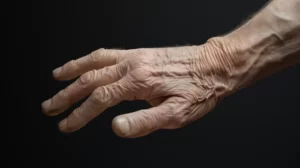You might think that brushing your teeth is one simple task that you’ve had down since childhood. Surprisingly, many of us are still not brushing our teeth the right way, or even worse, not brushing effectively, which could lead to dental hygiene issues in the future. Worry not, as this article will guide you through everything you need to know about the correct way to brush your teeth to keep them healthy, sparking and plaque-free.
The Right Toothbrush
First, let’s talk about choosing the right toothbrush. It’s essential to use a toothbrush with soft bristles, as medium or hard bristles can cause more damage to your enamel and gum tissue. Remember to replace your toothbrush every three months or when the bristles begin to fray.
Brushing Technique Matters
According to research by the University College London, there is an alarming inconsistency in advice given on tooth brushing techniques. What’s more important, though, is the consistency of brushing your teeth twice daily, coupled with a simple yet effective technique.
Place your toothbrush at a 45-degree angle against your gum line, and gently brush with a horizontal scrubbing motion. This technique will give the bristles the proper angle to remove plaque from both your teeth and the gum line. When cleaning the interior surfaces of your front teeth, tilt the brush vertically and use up and down brushing strokes. Ensure you reach all areas of your mouth, including the molars and the tongue, which can also harbor bacteria.
The Two-Minute Rule
To maintain good dental hygiene, brushing your teeth for at least two minutes each session is highly recommended. This ensures that each area of your mouth is covered adequately. It helps to divide your mouth into four sections and spend about 30 seconds on each. Using an egg timer can be beneficial for this, or you can use an electric toothbrush with a built-in timer.
Not Too Hard and Not Too Soon
It’s crucial not to brush too hard, as overly aggressive brushing can cause damage to your teeth and gums. Hold the toothbrush with a pencil grip rather than a tightly clenched fist to avoid brushing too hard. Gentle strokes work best to keep your gums healthy.
Additionally, avoid brushing your teeth immediately after consuming sugary drinks or sweets. It takes about two minutes for the bacteria from these foods to start producing acid, so brushing your teeth too soon after eating can damage the enamel. Instead, wait a while before brushing your teeth to give the enamel a chance to recover.
Flossing and Rinsing
Flossing and using mouthwash go hand in hand with brushing. Flossing helps to remove plaque buildup and food debris that the toothbrush may miss. Make it a point to floss once a day, while using mouthwash as a rinse at least once daily as well will help kill bacteria and fight bad breath.
Dentist Visits
Regularly visiting a dentist every six months is vital for maintaining proper dental hygiene. These visits will not only help prevent potential problems but also catch dental issues early on before they worsen. Make sure to consult your dentist about any concerns you may have about your dental health.
The Bottom Line
Brushing your teeth the right way is essential for maintaining good oral hygiene and preventing dental problems. While the plethora of conflicting advice may be confusing, sticking to these simple guidelines can be highly beneficial. Remember to brush your teeth at least twice daily, hold the brush correctly, be gentle, and follow up with flossing and rinsing. Don’t forget to visit your dentist regularly to ensure your mouth remains as healthy as possible.



